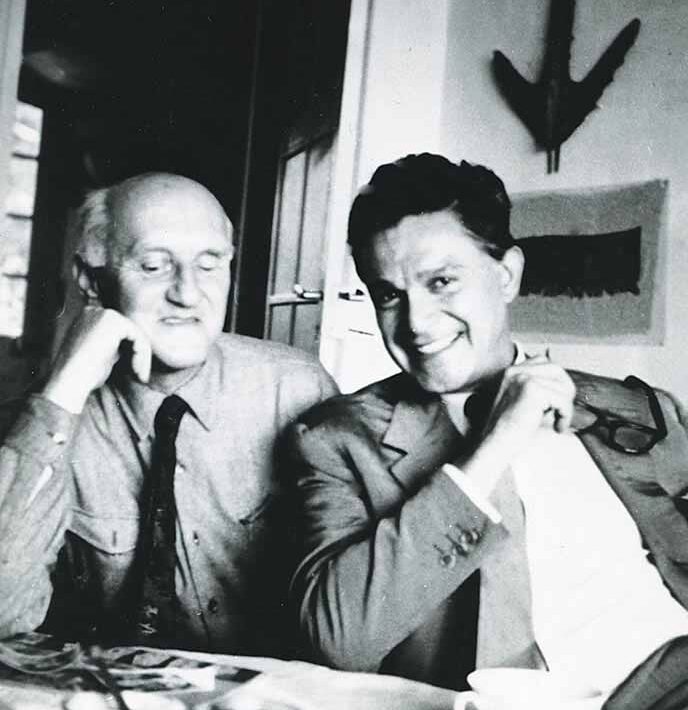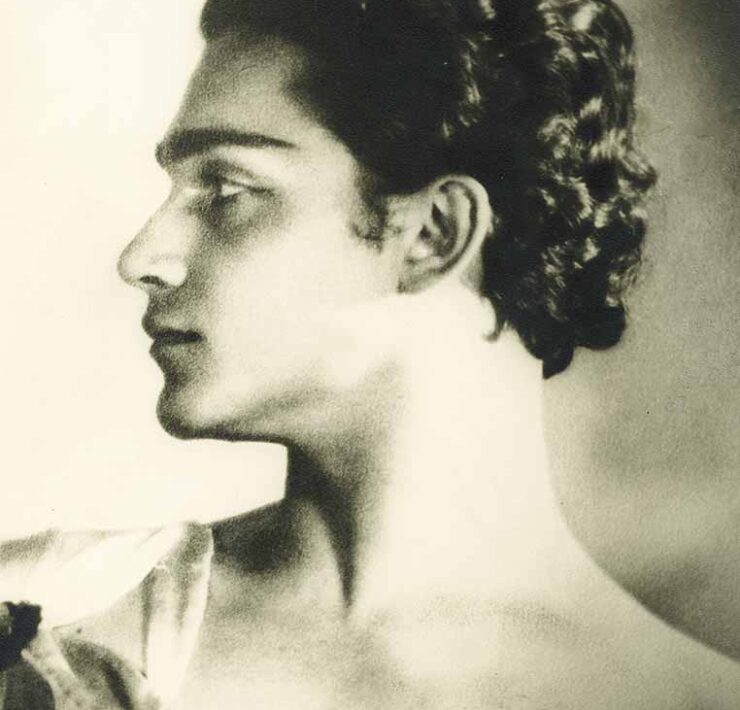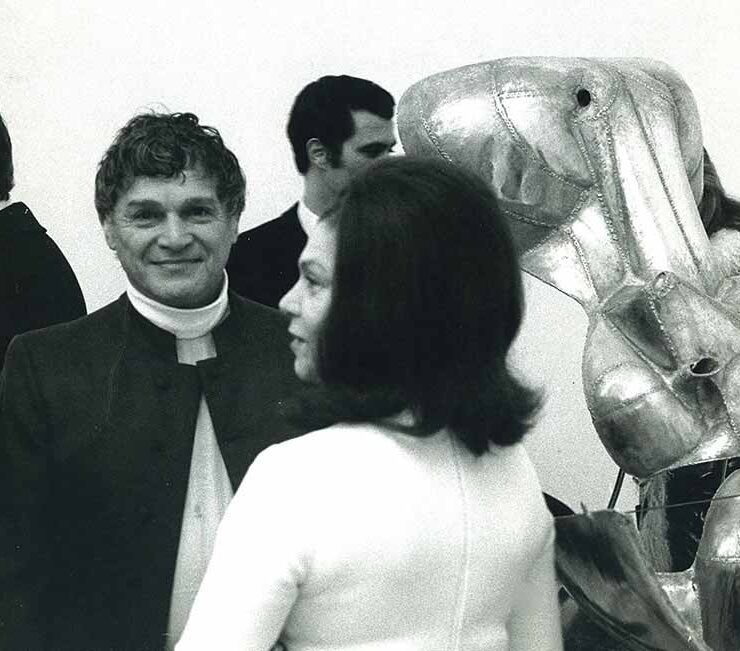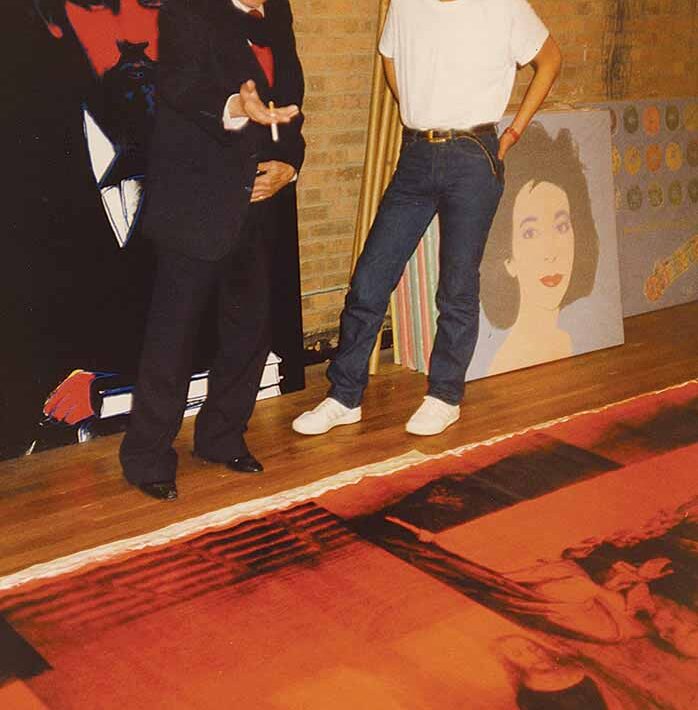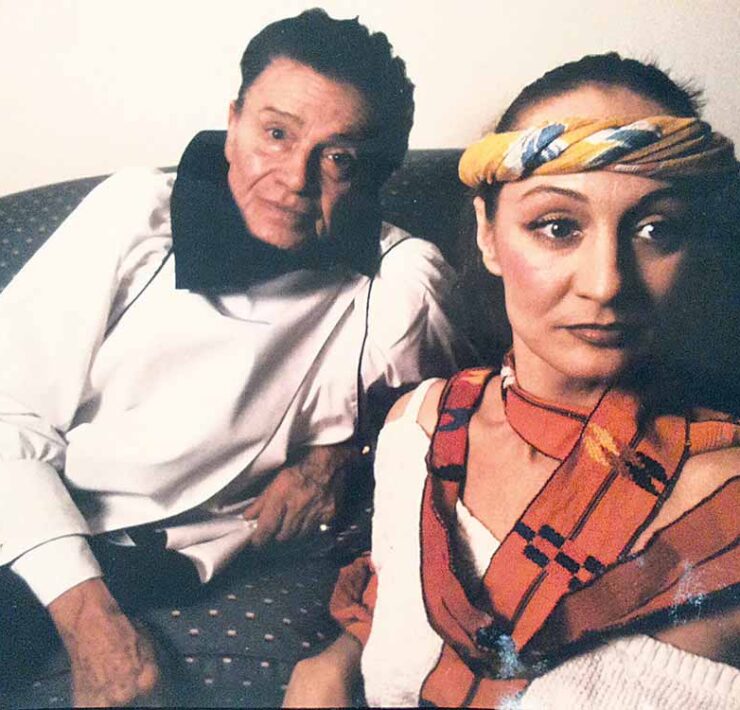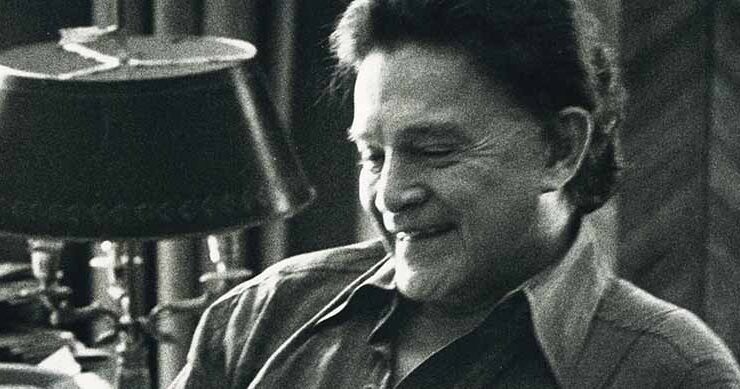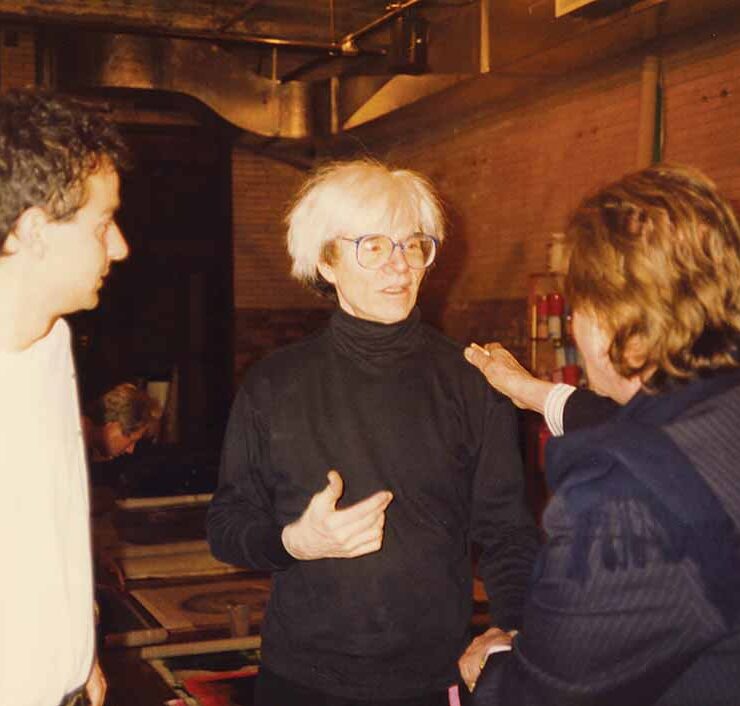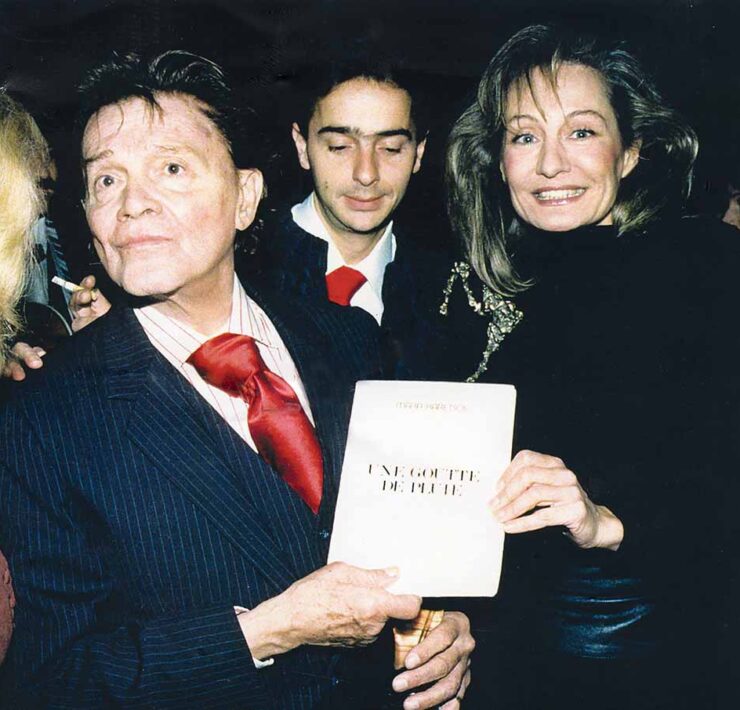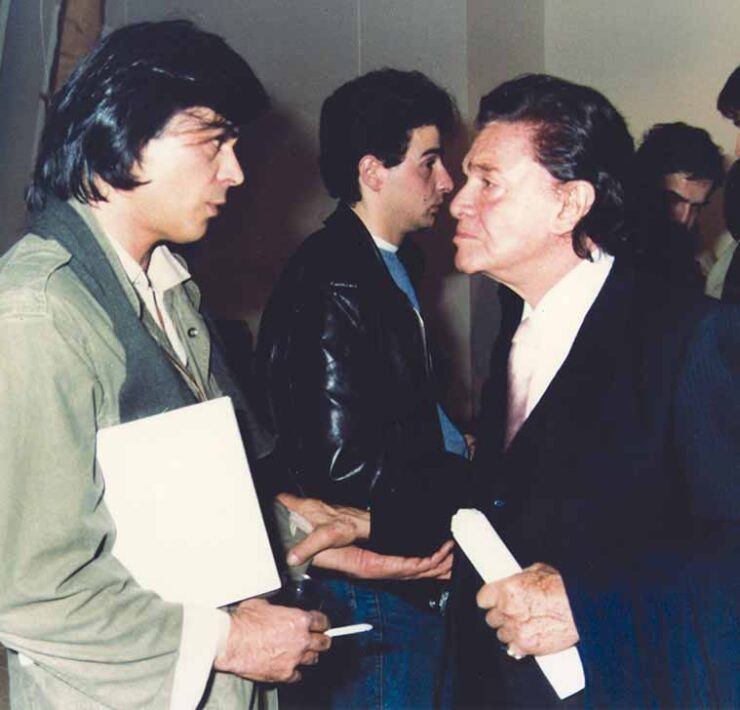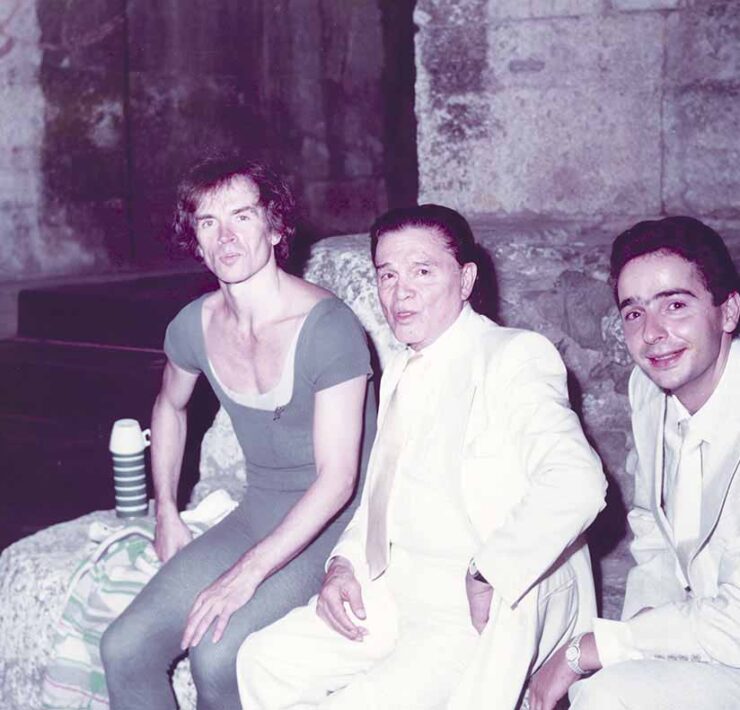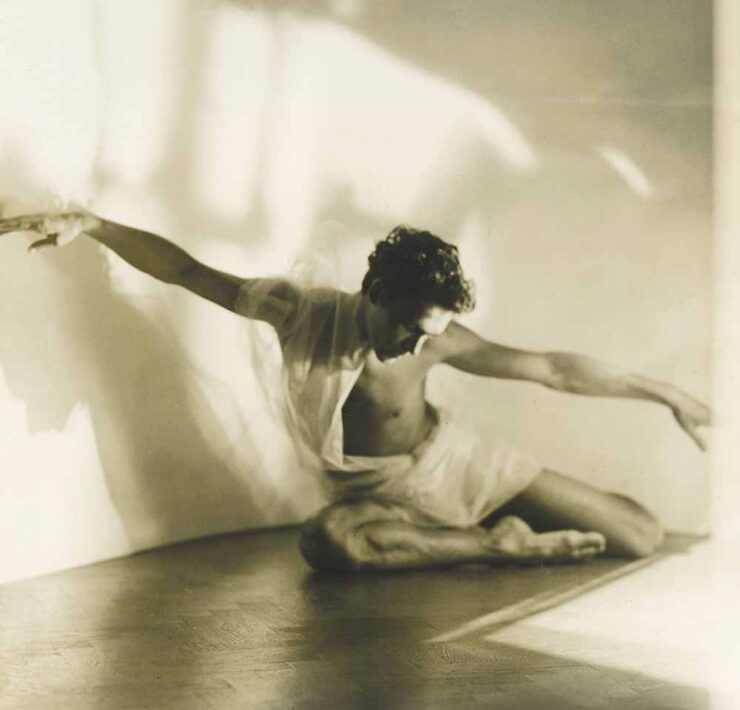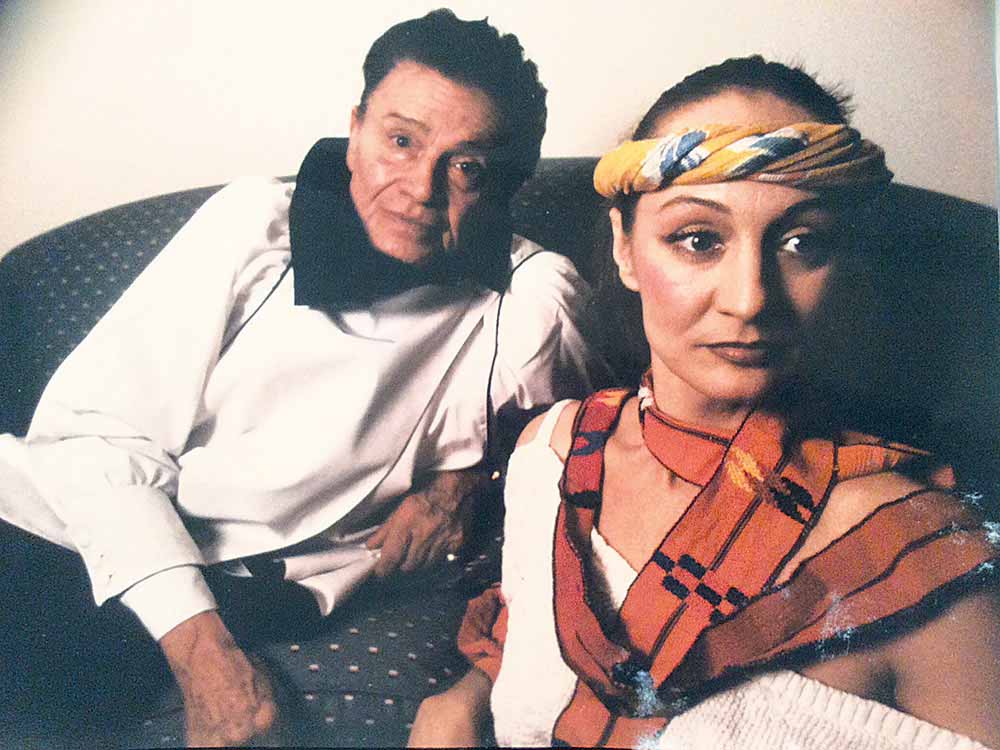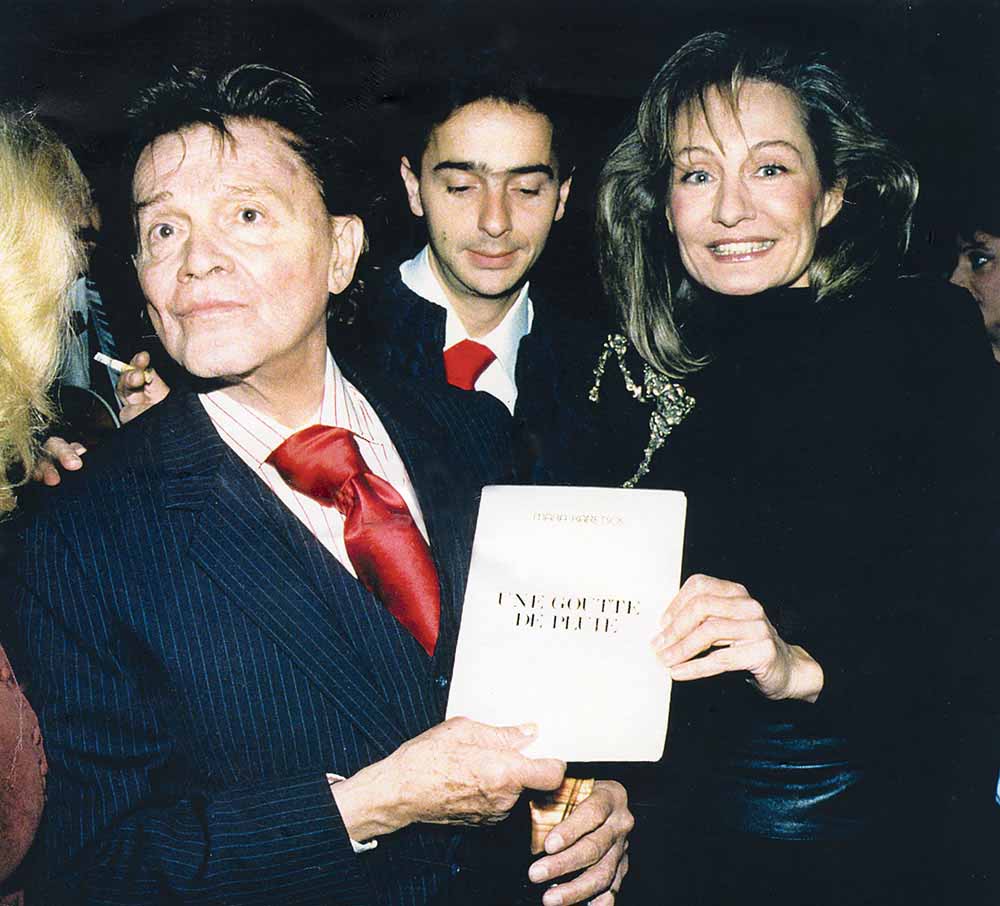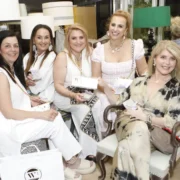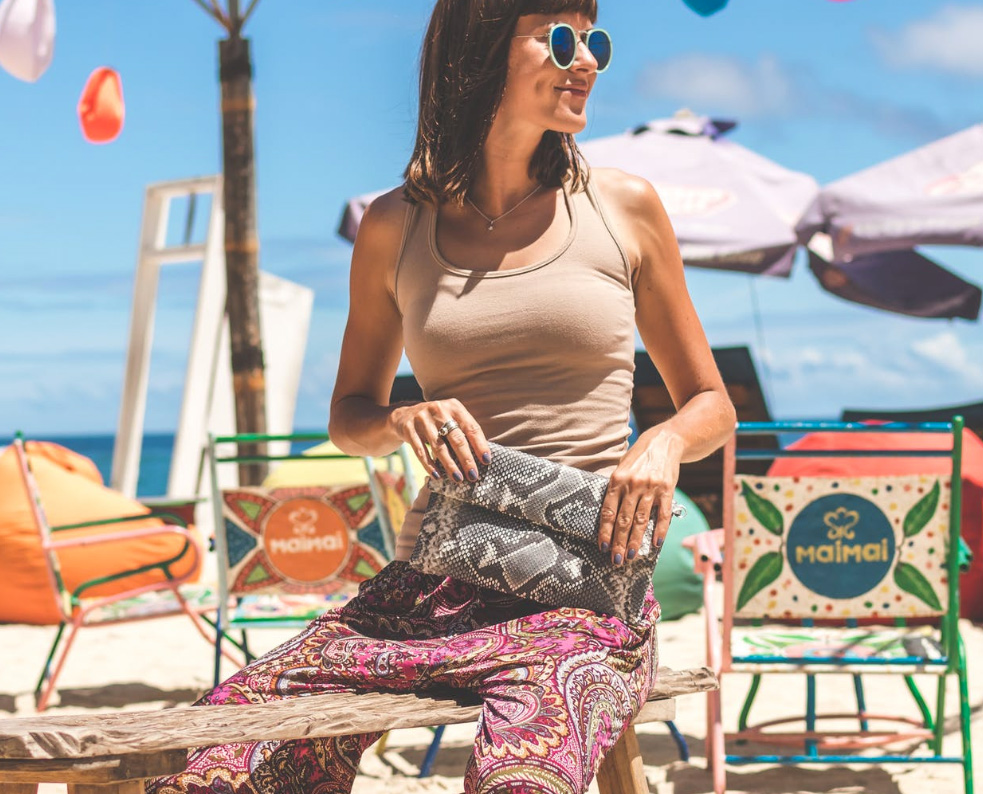Alexander Iolas




 +7
+7 A Patron of Art
We were never lovers. But we loved each other. We were not friends because of our laughter, but because of the tears, we shed. I did not want to be near You for thoughts that we shared, but for the words, we never had to say. This is what I would say to you, dear Alexander Iolas, paraphrasing Oscar Wilde. They knew each other’s minds. His thoughts. His intentions. How did you know so well who I was? How did you let me search for your soul? How lucky I feel that you honored me with your friendship. That you shared Your life in a few dozen tapes with laughter, songs, tears, and many moments of joy. We walked together the last moments of Your life. What an honor…!!! In the beauty of Art, you took me by the hand and led me. I saw a fire in your eyes. That most glowing and painful look I have seen. On our walks in capitals around the world. On our walks in the gardens of the villa in Agia Paraskevi. In the Museums and Living Rooms of Yves, Dominique, Pierre, Andre, Dino. What to remember first.“ In the notebook, you keep writing only the good…” you would say. That’s what I did then. This is what I do today. We will meet. That is certain dearest. Now everything is known. They love you. They appreciate you, in retrospect. This is how it is done here in the place of Tragedy. My promise was kept. Your name will be restored. That’s done. Your home will relive. And that will happen. Everyone is talking about you now. But I “spent” my life. But it was worth it dearest.
By Nikolaos Stathoulis – Biographer of Alexander Iolas
I am happy when I am given the opportunity to talk about a passionate cosmopolitan. A Patron of Art. Alexandrian Patron. Alexandros Iolas. “Greek from Alexandria” he liked to say with that passionate style and grimace, which always accompanied his superiority. Like that morning at the Pierre Hotel in New York, October 1986, when Alexandros Iolas was in his suite. We had arranged to have breakfast together every morning at 7:30. I lived one floor down. As I entered his suite, from the entrance and along the entire length of the corridor to his office, it was strewn with Greek newspapers and headlines: “Iolas is under investigation”, “Persecuted for Prostitution, Antiquities theft, Drugs”. A friend of his had passed by the Greek Embassy in New York, leaving him a body of Greek newspapers, which had been published two days before.
“Leave, Iola. Do not return. They will devour you. They will skin you alive! You are the most genuine victim. Do not give them the opportunity”, I said spontaneously, without realizing that he would explode.
“Listen to me, my child,” he said angrily, slapping his hand on the desk with such force that I wondered how he did not break it: “I carry on my back a history of thirty centuries. “I refuse to abdicate this responsibility and this honor because my country is ruled by the uneducated.”
At this moment I realized how Alexandrian he was. “If they want a victim to feed their wild instincts, they should go to find it elsewhere. I will define my personal tragedy”.
I did not say a word. I looked out the window at the roar of the street. Suddenly he exclaimed, “How did I reach this stage?”, slapping his hand once more, it bled by the force with which it fell on his keys. “Look at what happened, all I needed now is to bleed.”
“My God,” I said, terrified.
“The blood of betrayal”, he said sarcastically, and throwing on his shoulders his fur cape, he said protectively: “Let’s go out”.
We waited for the bleeding to stop to take to the streets of New York with Mara Karetsou. He loved Mara. He loved her as his child. He loved her work. Her artwork. He admired her stubbornness. That had captivated him. The rendezvous with Fred Hughes, Andy Warhol’s heir and best friend, was at 10. We had time. He liked to walk. It was good for his heart. I was observing an amazing person, that was by his compatriots from absolute supremacy to absolute destruction. Whom; The one who influenced Contemporary Art of the 20th century more than anyone else. The work of Alexandros Iolas exerted multiple defining influences on the artistic composition of the late 20th century, after Nazism. He was gifted and hardworking, who studied a lot and created his own concepts. Very knowledgeable. With a very sharp spirit, which was cultivated with values of Greek culture. A versatile personality. With an exciting life. With huge self-esteem and a sense of superiority. Such people live in immortality.
“Man is a vain being”
“Man is a vain being. At the end of his life, everything is canceled, as the game ends”, he will tell me in London in 1985.” Are you saying that? You, whose dreams became works of art? Another reality?”
“We are all at the mercy of the body. In the fury of our guts. Surrendered to their madness. Art is left to us. This is the gold of life. The face that hides orgasm and shudders. And the Ideas. They do the same job. It is this “eruption” in human skin. It comes from the bowels of the mind.”
It had baroque elements inside. Hypersensitive, seductive, dreamy. You could only meet him in fantasy tales.
“The citizens of a country must-see works of art in museums in order to mature quickly…” he said.
“Your stance is courageous, while they lead you to the Cross.”
“Niko my child, forgive them, for they do not know what they are doing”.
When the Greek spirit loses its balance, it leads to extremes, to tragedy. Only through art will the Greek spirit find its balance again. We need spirit. Let the artists return to their studios. Works of art have their own ethics and freedom. This is how citizens are educated. This is how they taught Greeks to acquire momentum and intellect for the great questions of life. That is why I am building this Museum so that they can come to see works of art and open their eyes.
I see young artists coming home to show me their work and I talk to them, with Nikos Alexiou, Christos Tzivelos.
“They suspect, they react, they are destined to break the shackles of all the ideologies of the world and to give back to freedom its true meaning.”
I liked listening to him. He was not eccentric with his provocative behavior. Those were his moments.
Near him, you were liberated
Yes, this is synonymous. This is what you want to use, you can count on it. If you want to continue, just like that. This is what you want to see if you want to do something about it. Especially those humans that life’s events and divine power were endowed with special spiritual gifts, have for the choice of this purpose of history, and increased responsibility.
Among those gifted in arts, was Alexandros Iolas. With questions that are illuminated by the lime radiation of the past of life, but are concentrated in the future, in the contribution of Greece in the modern era.
Greece today is a small and poor country. With limited material wealth. A country that has been invaded from everywhere and day by day, month by month, year by year we are losing vital spaces of our independence. “We are a small and poor country in everything. But we are rich in light,” my mentor, Alexandros Iolas, would tell me. “We come from the root and not the fruiting branch.” That’s what he would tell me.
I was in the second decade of my life when I met Alexandros Iolas. A patron of art. Calculating. Quipster. Insightful. Arrogant. Bold. Explosive. Ruthless. Like Socrates to his students, he extorted from me my very best. Just like he did with his artists. He pushed them to create specific works of art that he “saw” and “lived” before they started working on their materials.
Adventurer. He belonged to 2050 and after. Friend. More valuable than a very expensive piece of jewelry. Spiritual father. It did not take me long to recognize his true genius. He took me to the Louvre. To MOMA. To Beau Bourg. He would stand in front of works of art and tell me to look. His silence taught me much more than the wisest talk would teach me. Thirty years have passed. Today we honor this wonderful Greek who glorified Greece and died stigmatized.
Pretty much everyone now knows his biography. Even his mentors. From Konstantinos Cavafy, Angelos Sikelianos and Dimitris Mitropoulos, to the greatest artists of the 20th century.
It was 1946 when with the financial help of Elizabeth Arden, he collaborated with Hugo Gallery (originally owned by Hugo, painter, and grandson of Victor Hugo). During this time he presented for the first time in America solo exhibitions of Max Ernst (1946), Rene Magritte (1947), Victor Browner (1947), and the first solo exhibition of Andy Warhol (June 1952, with a series of illustrations of Truman Capote’s short stories). In 1953, Iolas became the sole owner of the gallery in New York, which was renamed “Iolas Gallery”.
Takis, the sculptor, exhibits for the first time in America at the Iolas Gallery (November 1961). This collaboration lasted until 1976.
Niki de Sanfal (1962) and Tingeli (1962) have solo exhibitions at the Iolas Gallery in America. The gallery has been well-established in America since the 50’s. His activities extend to Europe with the opening of the gallery in Geneva in 1963, which opens with the exhibition of Max Ernst, followed by the exhibition of Rene Magritte. In 1965 he opens the third gallery in Milan (among others the first solo exhibition of Pino Pascali 1967, and collaboration with Giannis Kounelis in 1968), followed by the gallery in Madrid. At the same time, he organizes exhibitions of Greek artists in all his galleries of Gikas, Tsarouchis, Fasianos, Tsoklis, Akrithakis, Bouteas, Marina Karellas, Pavlou, Lazogas and many others. The organization of the exhibitions and the creation of the galleries is considered exemplary, while Iolas’s archive in the Paris gallery is characterized as “a real gold mine for the history of art”, since, as Vasia Karkagianni – Karabelia said in 1969, “nowhere else have I found such a wealth of data, including the library of the Museum of Modern Art.”
The villa Iola in Agia Paraskevi
The “Villa Iola” had and still has a huge cultural value that goes beyond the narrow borders of the municipality of Agia Paraskevi. Nikolaos Stathoulis had dedicated his life to revive this villa that could ideally serve Art as envisioned by its owner.



